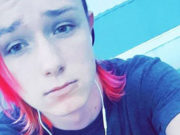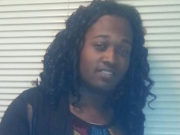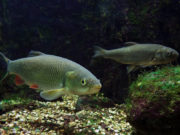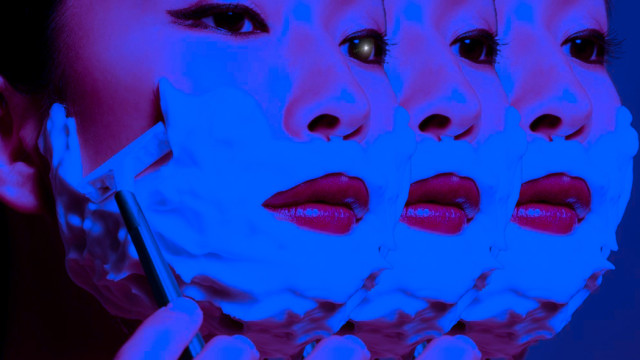From the ancient to the contemporary, women have habitually been tasked with removing unwanted body hair. Last week on Transgender Universe, we went to the salon to permanently remove unwanted body hair. This week, we’ll focus on hair removal techniques we can effectively do at home.
Facial hair, unfortunately girls, is not affected in any way by Estrogen. Permanently removing beard and mustache hair is a prime focus of our feminine transition. Body hair, however, does lighten as Estrogen replaces Testosterone.
My self-confidence is inversely proportional to the amount of hair I feel on my face
As I started my transition, I sa w reflected in the mirror a hirsute, faceless apparition. My self-confidence was inversely proportional to the amount of hair I felt on my face. Shaving, depilatory creams, waxing and tweezing, all absorbed the available minutes I had to myself, throughout my emotionally charged transition. These weren’t surrogates for a permanent solution, I knew, but would bridge the gap between my ongoing salon appointments.
w reflected in the mirror a hirsute, faceless apparition. My self-confidence was inversely proportional to the amount of hair I felt on my face. Shaving, depilatory creams, waxing and tweezing, all absorbed the available minutes I had to myself, throughout my emotionally charged transition. These weren’t surrogates for a permanent solution, I knew, but would bridge the gap between my ongoing salon appointments.
Female hair is thinner, while male hair is coarser. Follicles tend to be denser on the cismale and less so on cisfemales. Otherwise, there is virtually no difference between male hair and female hair. Given female and male hormonal differences, what works for women may not always engender the same results for men. Where that leaves transfemales and transmales is still debated. It is unclear if there is follicle density reduction in transfemales. Since hair follicles are determined at the 22nd week of fetal development, transmales will not generate additional follicles.
Allow me a bit of repetition from the salon depilation treatments article. This information is important to alleviating potential frustrations and reaching your hair removal success.
Hair growth happens in cycles, therefore, any method will take multiple treatments over the course of several months, possibly up to several years, to complete. Reason being, all the hairs in a specific area are not in the active phase simultaneously. The hair growth cycle has four phases:
- Anagen: the active phase of hair growth. Determines the final length of the hair.
- Catalan: the transitional phase. This lasts for about ten days and where the follicle detaches from the dermal papilla.
- Telogen: the resting phase and lasts about three months. In this phase, the old hair ceases growth and new hair begins the regrowth process.
- Exogen: the continuation of the resting phase. Old hair sheds and new hair pushes out the old hair. Also referred to as the “Return to Anagen” phase.
Hair is actually dead protein. Color, length and coarseness vary, depending on the location on the body. For instance, fine hair on the upper cheeks and forearms differs from the mop on your head and from unwanted, coarse, facial hair. Three are two important factors in a successful completion of permanent hair removal. Your skin tone and hair type.
SKIN TONE
Thomas Fitzpatrick, an American dermatologist, known as the “father of modern academic dermatology” studied hundreds of people, principally for treatments of skin cancers, and how the skin reacted to UV light. He developed a scale of skin types, known as the “Fitzpatrick Scale,” which helped increase the effectiveness of the cancer treatments. Since laser treatments hit the skin with UV light, laser machines and technicians use the Fitzpatrick scale to determine how best to treat patients.
HAIR TYPE
Determining your hair type is just as crucial for successful treatment. There are three types of hair on the human body:
- Lanugo: This is the very fine hair we first had in gestation. It protects delicate skin and is typically very light in color
- Vellus: This is the ‘peach fuzz’ covering mostly children and cis-women. It acts as wick to pull sweat from the skin, which is most likely an ingredient to why women are more susceptible to colder temps.
- Terminal: Longer, thicker, and darker than villus hair. It varies in length, making up the hair on arms, head, face, legs, genitals.
HAIR SHAPE
Your hair shape is typically relegated to head and genital hair. There are four shapes of hair on the human body: Straight, Wavy, Curly, Kinky. Shape is determined on the shape of the hair follicle. The more hooked the hair bulb, the curlier the hair.
Creams and Hand Tools
- Depilatories: The active chemicals calcium thioglycolate and sodium hydroxide give these

depilatory cream creams their lovely aroma -sarcasm. Those are the ingredients that dissolve the hair protein at the surface. Current depilatory creams are combined with a fragrance to cover the chemical odor. They also come in a variety of applicator formulas (creams, sprays, lotions, gels).
- Shaving: using a shaving cream with a moisturizer helps reduce skin irritation. Current women’s razors have multiple blades for a smoother and longer lasting shave. Heads with 4, 5, or 6 blades are optimum, especially for our softening facial skin. The 1st blade lifts the hair up from the skin surface, and the latter blades cut the hair, allowing to fall back into the follicle, leaving smoother skin.
- Sugaring: this method is similar to waxing. It uses all organic ingredients and is available in a paste or

sugaring gel. The paste technique works best if the goop is applied in the opposite direction of the hair growth, then removed following the direction of hair growth. Gel technique follows waxing technique, which is opposite the paste technique. There have been reports that repeated sugaring damages the hair follicles to the point where hair no longer grows.
- Waxing: Look for waxing kits that list glyceryl rosinate as one of the ingredients. This softens the wax, making it more pliable and softer, promoting it to stick to your hair and not your skin. Also, traditional muslin strips are more porous

upper lip waxing than the newer pellon strips, so the wax doesn’t ooze through, allowing for fine hairs to be pulled out. Apply wax in the direction of hair growth and remove in opposing direction of hair growth. You are applying harsh chemicals directly onto your skin, so it is best to try in a small area, before going full bore on your body parts, to see if you get a skin reaction.
- tweezing: is a slow process and is typically reserved for small areas, such as eyebrows, stash and small touch up areas. Repeated tweezing increases the probability of developing ingrown hairs. This technique can be painful, especially on areas where skin is thin. For best results, invest in a high quality, slant tip tweezer. Warming skin

tweezing prior to tweezing, such as after a nice long soak, will help reduce the painful effects of yanking the hair from your skin.
- HaiR free: a cream marketed directly for the transgender community. HaiR free hair remover. It proclaims that it removes hair just as a laser treatment. To me, that implies immediate limitations, similar to that of laser. It will only be effective on identical skin tones and hair types, as that of a laser, would be my assumption. There are endorsements on their website(link above), most notably from Kylan Wenzel, Miss Trans-California. I am skeptical of these internet based “wonder” remedies. Also, their professionalism is hampered by multiple spelling and grammar mistakes. If any readers have first hand experience with this cream, please post a comment on your experience.
Portable Removers
- Laser– there is only one dermatologist recommended handheld laser device on the market, the Tria laser removal system. This device only works on brown or black body hair. There are mixed reviews on the effectiveness of this product.
- IPL(Intense Pulse Light)- differs from laser. Laser emits a specific and targeted light, while IPL pulses the full spectrum of light. This method has an insignificant effect on hair removal. Since this (and laser) technique affect pigment, the skin is susceptible to damage and discoloration. IPL is an acceptable method for treating blood vessels, and not recommended as a hair removal option.
- Epilators– these are not electrolysis devices. Originally introduced in the 1980’s, these draconian devices used a swirling disc system to grab and yankmany hairs out at the root at a time. Current iterations of these epilators are less painful. They

personal epilator employ a series of jaw-like tweezers to loosen and extract the individual hairs. Combining exfoliation before using an epilator will greatly reduce the chance of ingrown hairs.
Each of the above techniques have their protractors and detractors. Each also have different hair length requirements to achieve optimum results. The length of effective time between treatments varies with method used, skill level, skin tone and hair type. That being said, there will be a bit of experimentation with some of these techniques and combinations of techniques, before determining an effective treatment regimen.
As with any medical treatment, there may be negative effects on the skin. This is dependent on your skin tone and hair type. Risks include dark spots, scabbing, skin ‘pits’ or ‘divots’, ingrown hairs, discoloration, or scarring may result. These are, in most cases, temporary, but can be permanent. I strongly recommend working a trial area before starting any full fledged treatment.
mir, irini, peace, amn,
-jahn



































